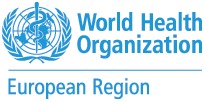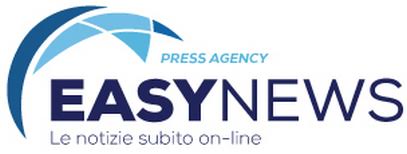
WHO/Europe and ECDC report reveals increasing numbers living with undiagnosed HIV in the Region
Embargoed until 0800 GMT / 0900 CET on Wednesday, 30 November
Copenhagen, 30 November 2022
Under-diagnosis of HIV in the European Region means hundreds of thousands are not getting the care they need when they need it, new data shows.
On World AIDS Day, a new report, jointly published by the WHO Regional Office for Europe and the European Centre for Disease Prevention and Control (ECDC), shows that since at least 2018 and through 2021 more people became infected with HIV in the European Region than had been diagnosed.
In contrast, in the EU/EEA, there were slightly more diagnoses than HIV infections during the last decade, indicating that the number of people living with undiagnosed HIV is likely decreasing in many of those countries. Still an estimated one in eight people living with HIV in the EU/EEA remains undiagnosed.
“We should all be deeply concerned by the data on HIV testing, treatment and care in Europe and Central Asia. Continuing, widespread stigma around HIV is deterring people from getting tested and is steering us dangerously off course from meeting our 2030 goal of ending AIDS.
If we are to deliver on our promise, we must make access to HIV services equitable. We must work together to make sure that no one feels afraid of getting tested, nor shame, despair or isolation about their status. Everyone, everywhere should be able to get the services and respectful care they need,” said WHO Regional Director for Europe, Dr Hans Henri P. Kluge.
ECDC Director Dr. Andrea Ammon stated: “In the absence of regular HIV testing for those most at risk, there can be a long period of time between HIV infection and diagnosis. This is not good for individuals, as they have higher chances of severe illness and even death if diagnosed late. It is also not good for public health, as untreated positive individuals can unknowingly pass on HIV to their sexual partners.
For this reason, we want to decrease the number of people living with undiagnosed HIV through early testing and rapid linkage to HIV treatment. Unfortunately, we see things moving in the opposite direction, with large numbers of people living with undiagnosed HIV.”
A quarter fewer HIV diagnoses made in 2021, compared to pre-pandemic levels
In 2021, nearly 300 new HIV diagnoses were made every day across 46 of the 53 countries in the Region, including 45 each day from EU/EEA countries. This amounts to 106 508 newly diagnosed HIV infections in the Region, including 16 624 from countries of the EU/EEA.
However, there was a sharp decline in reported numbers during 2020, the first year of the COVID-19 pandemic, and new HIV diagnoses reported in the WHO European Region in 2021 remained almost 25% fewer than pre-pandemic levels.
Just over half of those newly diagnosed in 2021 had a CD4 cell count of less than 350 per mm3 at the time of diagnosis, indicating that they very likely had been living with undiagnosed HIV for up to eight or 10 years. Of those, just over a third had more advanced HIV infection with a CD4 cell count less than 200/mm3.
Testing impacted by COVID-19
There is a crucial need for the rapid scale-up of HIV testing, given the negative impact of the COVID-19 pandemic on testing services in the Region. Clinical and public health surveillance resources were overstretched during the pandemic, leading to many countries struggling to test and report new HIV infections.
New strategies are required to improve early diagnosis and make more people aware of their infection by expanding diversified and user-friendly approaches to more widely available HIV testing, according to the report. Under-diagnosis and under-reporting mean late HIV diagnosis remains a major challenge in the Region.
Injecting drug use and sex between men driving HIV transmission
Over the course of the last four decades, over 2.3 million people have been diagnosed and reported as living with HIV in the WHO European Region, of which nearly 590 000 were people in the EU/EEA.
Heterosexual transmission has decreased substantially in the EU/EEA and the West in recent years, particularly among women, as has the number of cases due to sex between men in selected countries in the EU/EEA and the West. While transmission through injecting drug use has declined steadily since 2012, it remains high in the East.
The WHO Regional Office for Europe and ECDC, together with Member States and partners, will further monitor the long-term impact of COVID-19 and that of the more recent war in Ukraine on HIV surveillance and continuity of HIV services. This will help understand how the pandemic may have affected HIV incidence and mortality, particularly in those subregions and groups most at-risk, and will support the continued high standard of European HIV and AIDS data.
ENDS
For a copy of the report or to line up interviews please contact Sampreeti Aipanjiguly: aipanjigulys@who.int
WHO resources
World AIDS Day 2022 – Equalize access to end AIDS
HIV/AIDS in the European Region and WHO support
ECDC resources
ECDC Special report: Continuum of HIV care, published today!
Public health guidance on HIV, hepatitis B and C testing in the EU/EEA
HIV testing in Europe and Central Asia
Monitoring of responses to the hepatitis B and C epidemics in EU/EEA countries – 2020 data
This information was brought to you by Cision http://news.cision.com
If you would rather not receive future communications from WHO Regional Office for Europe, please go to https://optout.ne.cision.com/en/2Lo6JE75THssHwoCtpUaYVtzYntc8usL7rCEupUWRXrhEdbCgv1YVx7g1QCxhxQnQv9aKaezv5Dhcb2ktr94qymMYDwBBcb13uKVXNLrfM8zSWFPEeahKvdZa49LFHxFVBSC.
WHO Regional Office for Europe, Marmorvej 51, Copenhagen, 2100 Denmark




